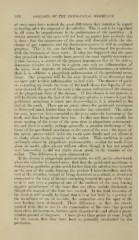Page 966 - My FlipBook
P. 966
976 DISEASES OF THE PERIDENTAL MEMBRANE. ; ;
of cases must have noticed the great differences they manifest in regard
to healing after the removal of the calculus. This is not to be explained
in all cases by imperfections in the performance of the operation. A
certain minority of the cases \\\\\ not heal, no matter how perfectly this
is done ; but the turgescence of the gum will diminish while the dis-
charge of pus continues and the destructive process is still in unabated
progress. This is the one fact that has so discouraged the profession
with the treatment of these cases. It often has happened that the cases
that promised the best results have proved the most rapidly destructive
it thus becomes a matter of the greatest importance that we be able to
determine whether we have in a given case only an inflammation of
the gums from deposits of calculus—calcic inflammation—or whether
there is in addition a phagedenic inflammation of the peridental mem-
brane. Our prognosis Avill be far more favorable if we determine that
we have only a calcic inflammation to deal with. The absence of pock-
ets extending up beside the roots of the teeth above the deposits of cal-
culus (toward the apex of the root) is the surest indication of the absence
of the phagedenic form of the disease. If this disease is not present, it
will be found, when the last of the salivary calculus is removed, that the
peridental membrane is intact just above—that is, it is attached to the
root of the tooth. There are no points where the peridental membrane
is destroyed much farther than the calculus has extended. The calcu-
lus may, however, have extended so far as to cause the loosening of the
teetli, and thus bring about their loss. In this case there is usually far
more wasting of the tissue of the gum than in phagedenic pericementi-
tis, and there is usually, perliaps generally, a peculiar thickening of the
tissue of the peridental membrane at the apex of the root—the tissue of
the apical space—which holds the tooth quite firmly and yet allows it
to shake about in the remains of the socket. This condition is quite
uniformly ab.scnt in phagedenic pericementitis ; so that the tooth drops
from its socket, often almost without effort, though it has not seemed
very loose—that is, did not shake about much in the remains of the
socket. This difference is quite characteristic.
If the disease is phagedenic pericementitis, we Mill, on the other hand,
when the calculus is cleared away, find that the peridental membrane is
destroyed at particular points much farther than the calculus has extended
on the root of the tooth, forming the pockets I have described, and the
wall of the alveolus, instead of being destroyed as a whole, is destroyed
somewhat in the form of Assures extending toward the apex of the root
or it is only over a portion of one of the surfaces of the root, leaving
angidar prominences of the bone that are often unduly thickened, as
though the margin of the bone was everted. In the final loosening of
the tooth it will usually be found that it is at last held by a portion of
the membrane of one of its sides, the membrane over the apex of the
root having been destroyed. These differences, as they are closely
studied from day to day in the examination of the cases that present
themselves for treatment, become quite characteristic and afford a jn-etty
reliable ground of diagnosis. I have given these points at some length
for the reason that they have been so generally overlooked by the
profession.


